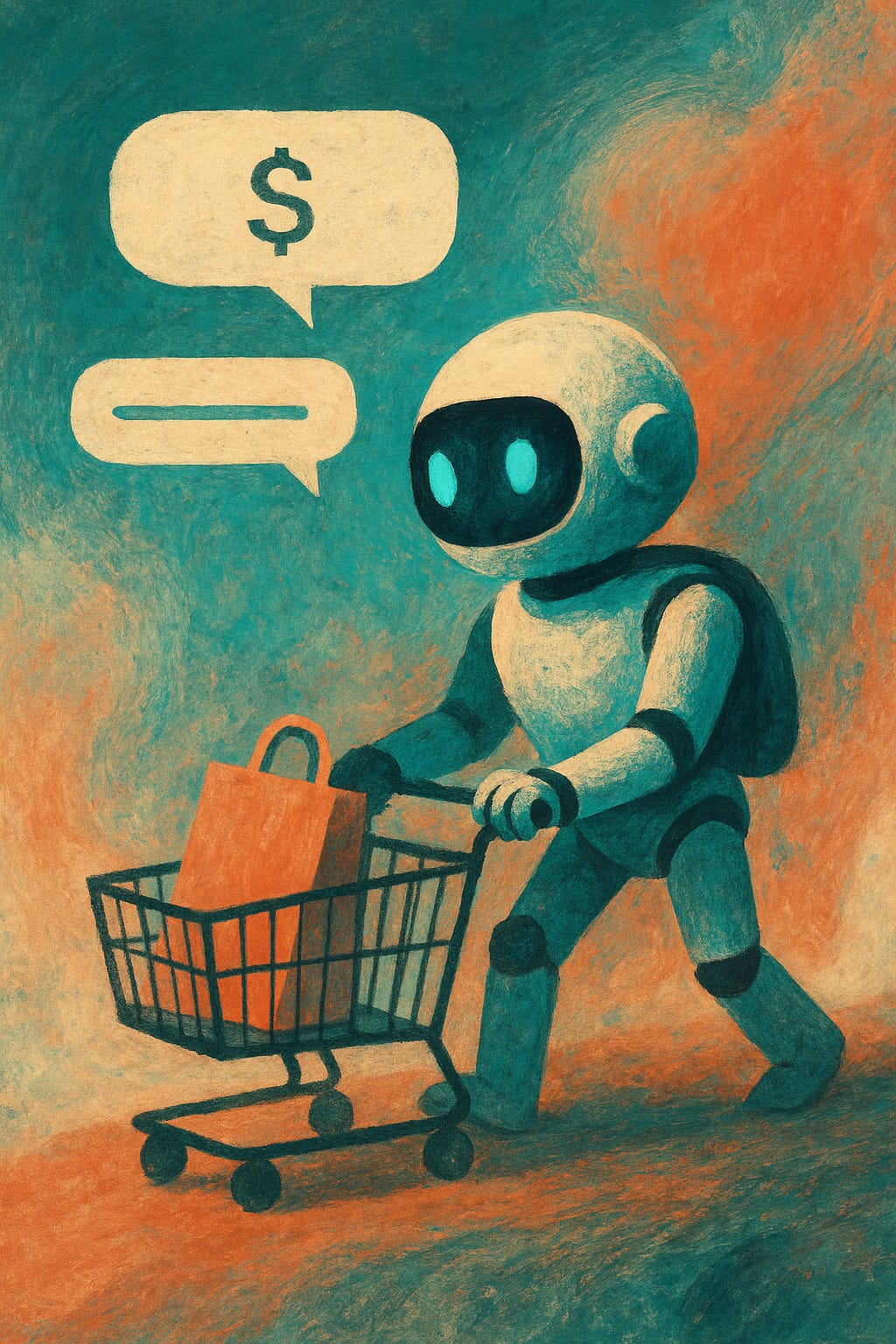The Perplexing Turn Toward In-Chat Commerce
AI search is collapsing discovery and transaction into a single surface. What if search is the new point of sale?
AI is weird. It’s a market that’s hurtling toward commoditization - while consumer taste is still unformed, unstable, and up for grabs.
Consumer AI is in its awkward teenage phase: immensely powerful, still figuring out how to dress. The market hasn’t fully decided if it wants a co-pilot, a butler, a search engine, a therapist, or a game. And the answer is probably “yes.”
This creates a strange inversion of normal product strategy:
In most markets, customer needs are clear, and differentiation comes from execution.
In AI, execution is cheap, but the need itself is foggy.
This fog has two consequences:
🔁 1. Fast Imitation, Short Differentiation Windows. Once a use case resonates-coding assistants, AI note-takers, image generators-it’s immediately cloned. The defensibility clock starts ticking the moment you hit “launch.” This rewards companies who can sense emerging taste before it’s obvious -not just in model design, but in interface, onboarding, pricing, and tone. Taste, not tech, becomes the edge.
🚪 2. Commoditization Without Maturity. Most commodity markets are defined by stability. Steel, oil, cloud compute - everyone knows the specs, and winning is about cost, distribution, or bundling. AI is the opposite: it’s becoming a commodity before it’s mature. Before trust is established. Before preferences stabilize. Before people even fully understand what they’re using.
That creates a tricky situation: You need to build brand and behavior in a space where users are still forming opinions - and where every winning idea is a countdown to being copied. In a normal tech cycle, you skate to where the puck is going. In AI, you’re laying down the ice as you skate.
Which brings us to Perplexity - a company that, on paper, shouldn’t be winning. They’re in a knife fight with trillion-dollar incumbents with infinite capital, massive distribution, their own state of the art models - but to their credit, they've always been scrappy, punched above their weight, and competed on product sense in a market where the rules are still wet cement.
Their latest swing: in-chat commerce.
Need a backpack for hiking? Perplexity can now recommend one and let you purchase it, without ever leaving the conversation.
This isn't new behavior - people already shop based on what they read, see, and chat about. What's new is that the transaction layer is collapsing into the same surface as discovery, turning those moments of soft intent into hard conversion, without context-switching, app-hopping, or ad-chasing.
The old flow:
🔍 Search → browse → cart → checkout
The new flow:
🧠 Intent → answer → purchase
While many companies are experimenting with AI-powered shopping - Amazon’s building Rufus, OpenAI added a shopping layer, Meta’s pushing commerce in WhatsApp - Perplexity's approach to in-chat commerce stands out in a few distinct ways.
1. Search-Native, Not Just App-Native. Most commerce integrations in chat (e.g. WhatsApp catalogs, Instagram DMs, Amazon’s Rufus) are layered on top of platforms that were originally built for social, messaging, or e-commerce. The AI layer is an afterthought - or at best, a co-pilot.
Perplexity flips that. It was born as an answer engine - its primary purpose is to satisfy user intent quickly and cleanly. So when it adds commerce, it's not interrupting a conversation with a product - it’s completing an intent with a transaction. While others are adding AI to shopping, Perplexity is adding shopping to answers.
2. The UX is Seamless, Not Segmented. Most AI shopping experiences today break the interaction flow:
ChatGPT: "Here are some links."
Amazon Rufus: "Here’s a product, click to buy."
Meta: "Here’s a catalog -switch apps to complete the purchase."
Perplexity’s version is frictionless. If you're a Pro user with info saved, you can buy in a tap- in the thread, without switching contexts. It’s the closest thing we’ve seen to collapsing search, recommendation, and transaction into a single UI surface.
3. It's a Wedge Into a New Monetization Model. Everyone else is still trying to monetize AI via subscriptions, enterprise SaaS, or search ads. Perplexity has started building toward something different - transactional revenue embedded in intent fulfillment. No ad network. No affiliate links. Just directly moving a user from curiosity to conversion.That’s a different approach to monetizing AI search. It’s not about selling attention - it’s about capturing purchase intent natively.
4. It's Agent-Ready. While not framed this way publicly, this feature is a foundational step toward autonomous agents. A future AI assistant won’t just give you answers - it’ll order dinner, buy gifts, rebook flights. For that, you need: (1) Trust in recommendations, (2) Built-in payments and fulfillment, (3) UI that supports action, not just information. This move lays that groundwork, without calling it an agent.
This is a sign of things to come:
For 20 years, search monetized through ads.
Google became God by capturing attention and selling it to the highest bidder.
But AI doesn’t want your attention. It wants to close the loop.
We’re moving from:
🔍 “Here are 10 links.” to
🛍️ “Here’s what you need. Tap to buy.”
That’s not just a new UX update, it’s a revenue model transition - from CPCs to GMV cuts, from ad arbitrage to direct transaction.
The hard part isn’t getting there first. It’s building something sticky in a world that moves faster than habits can form.





